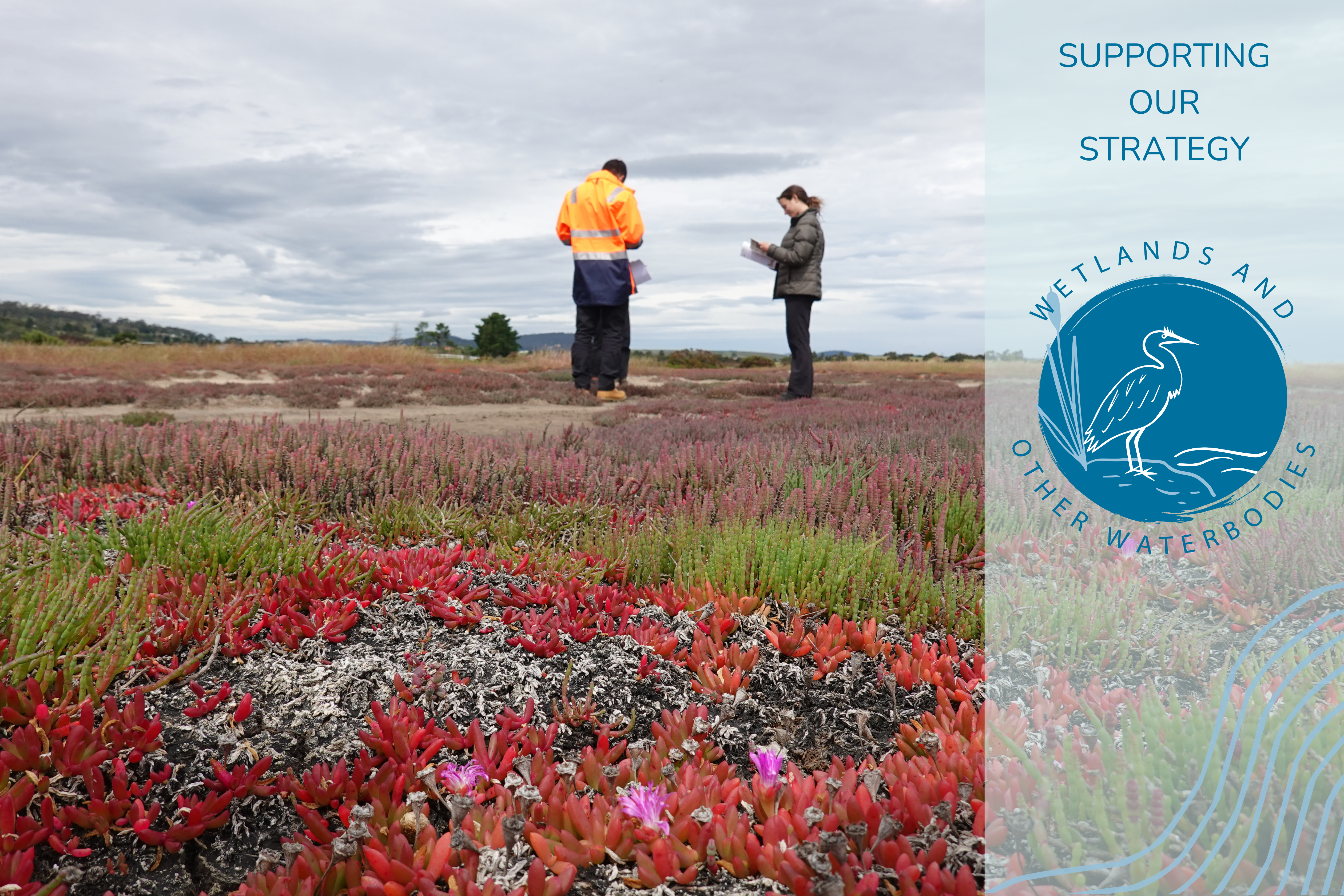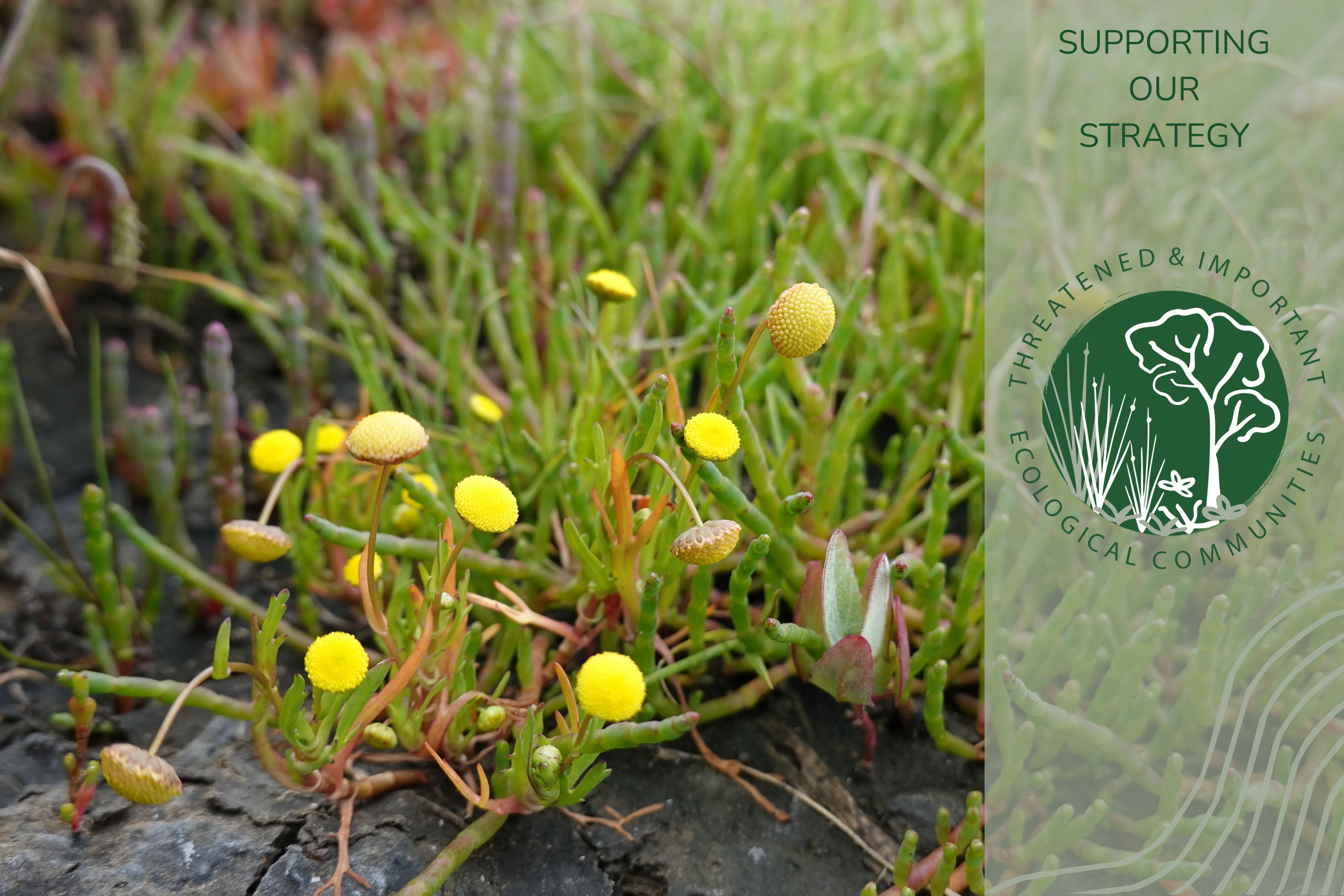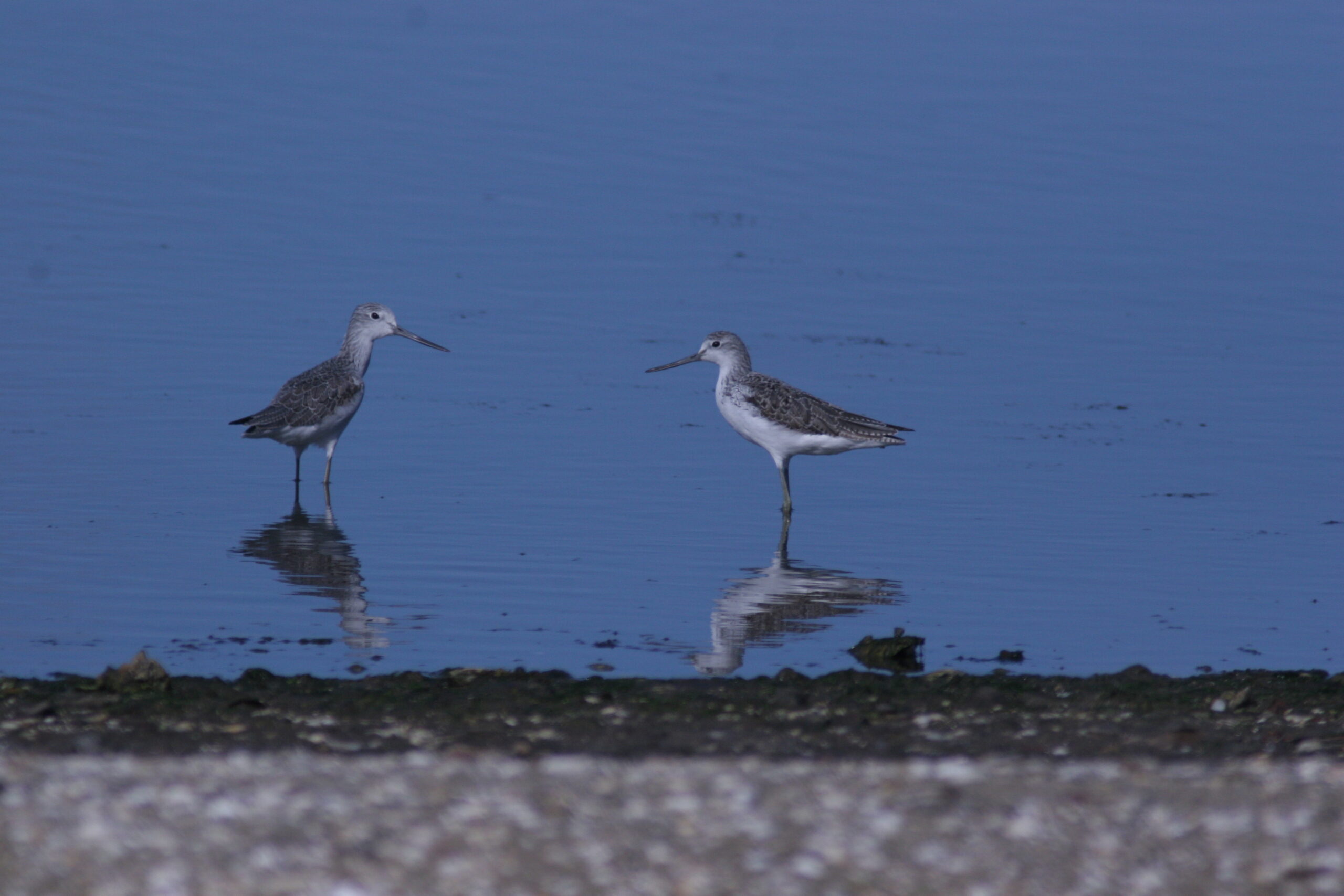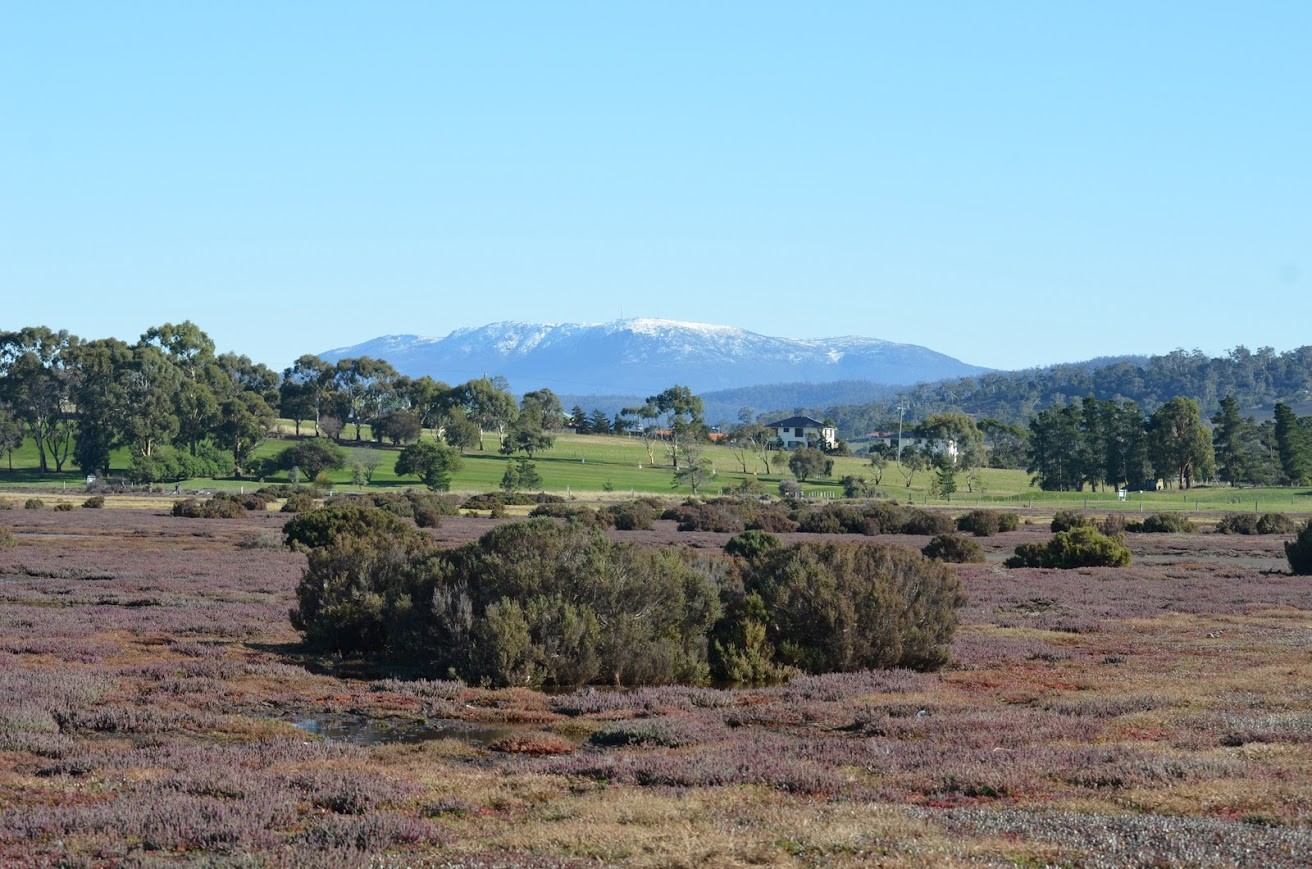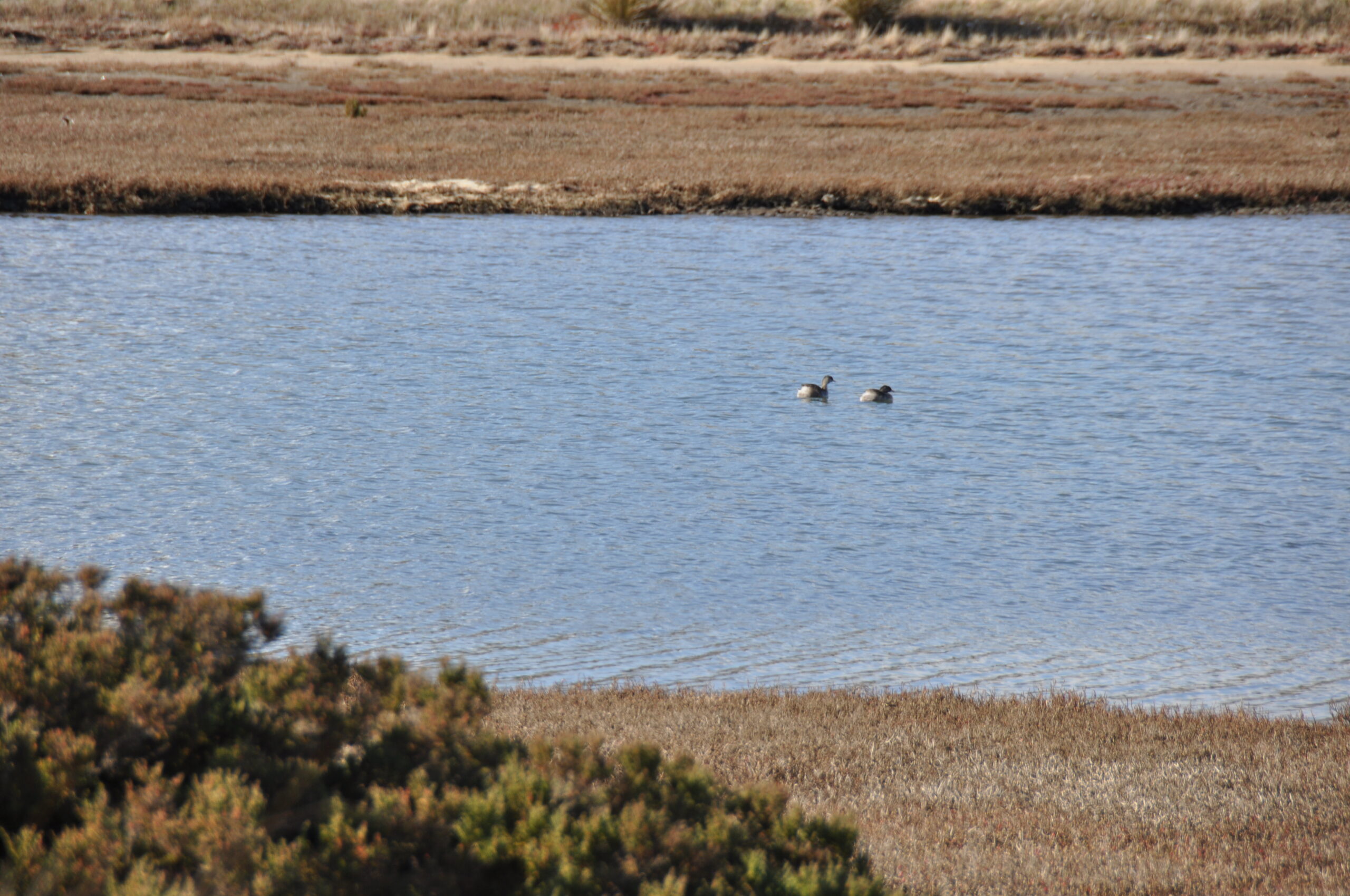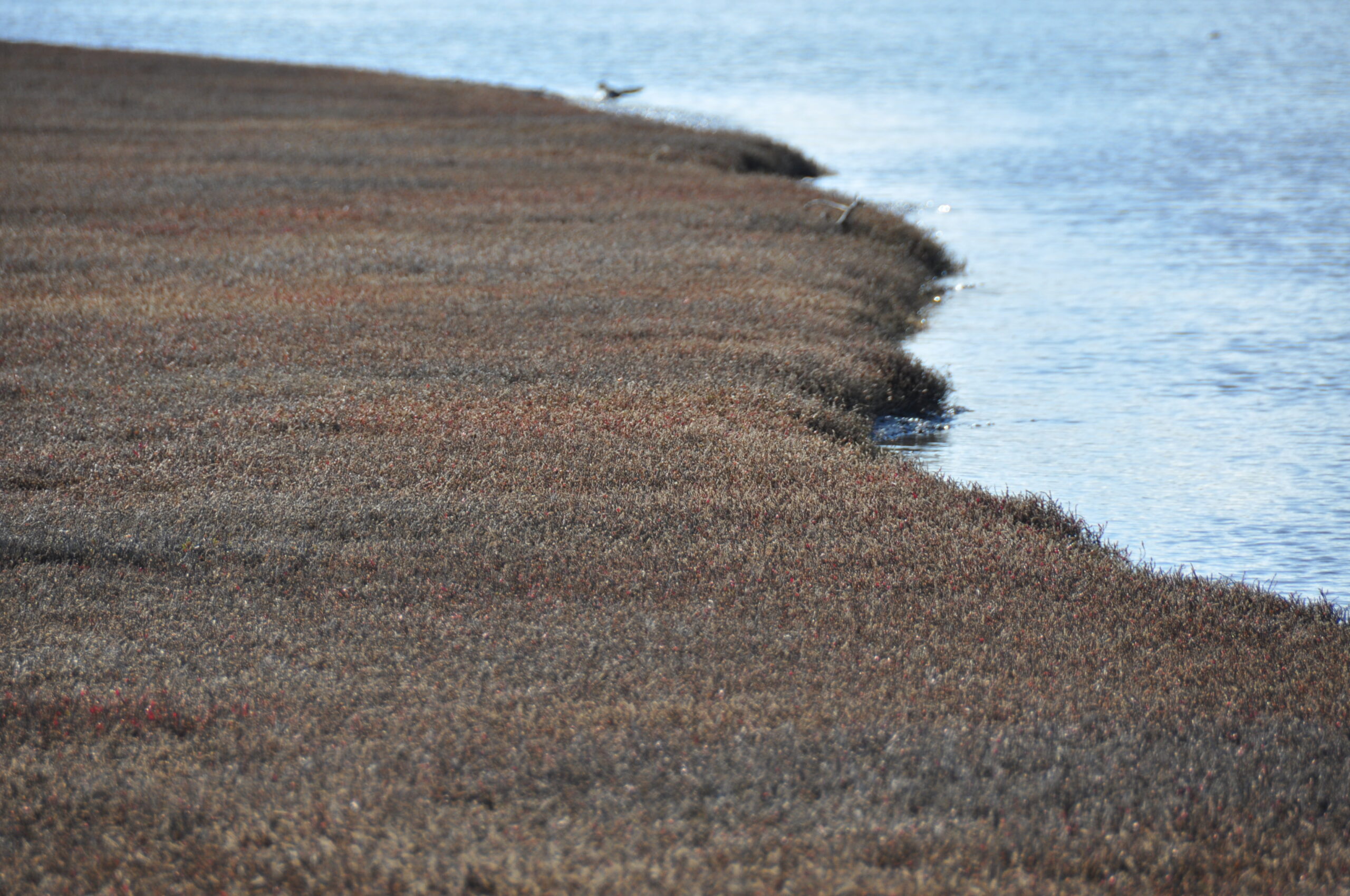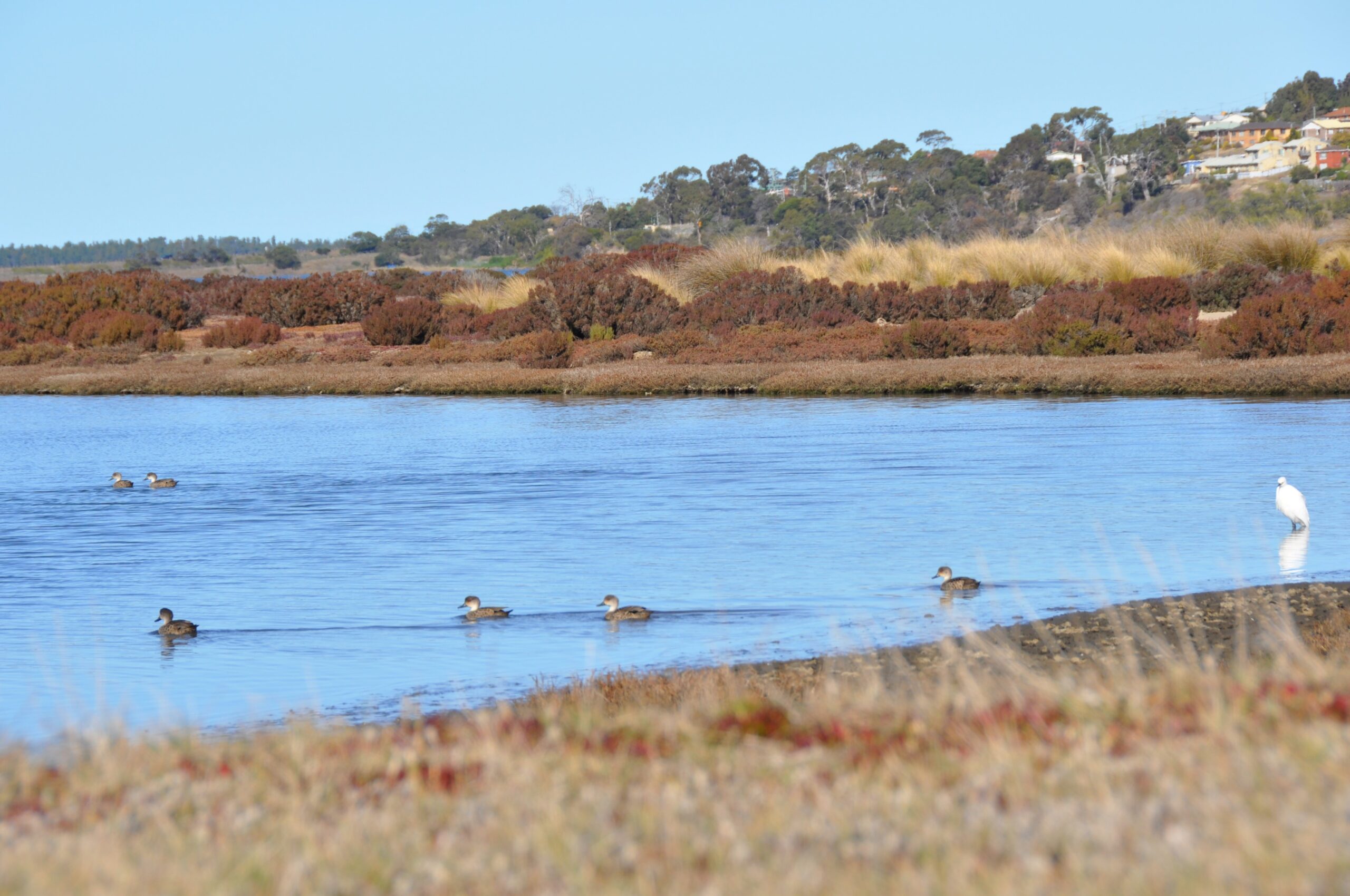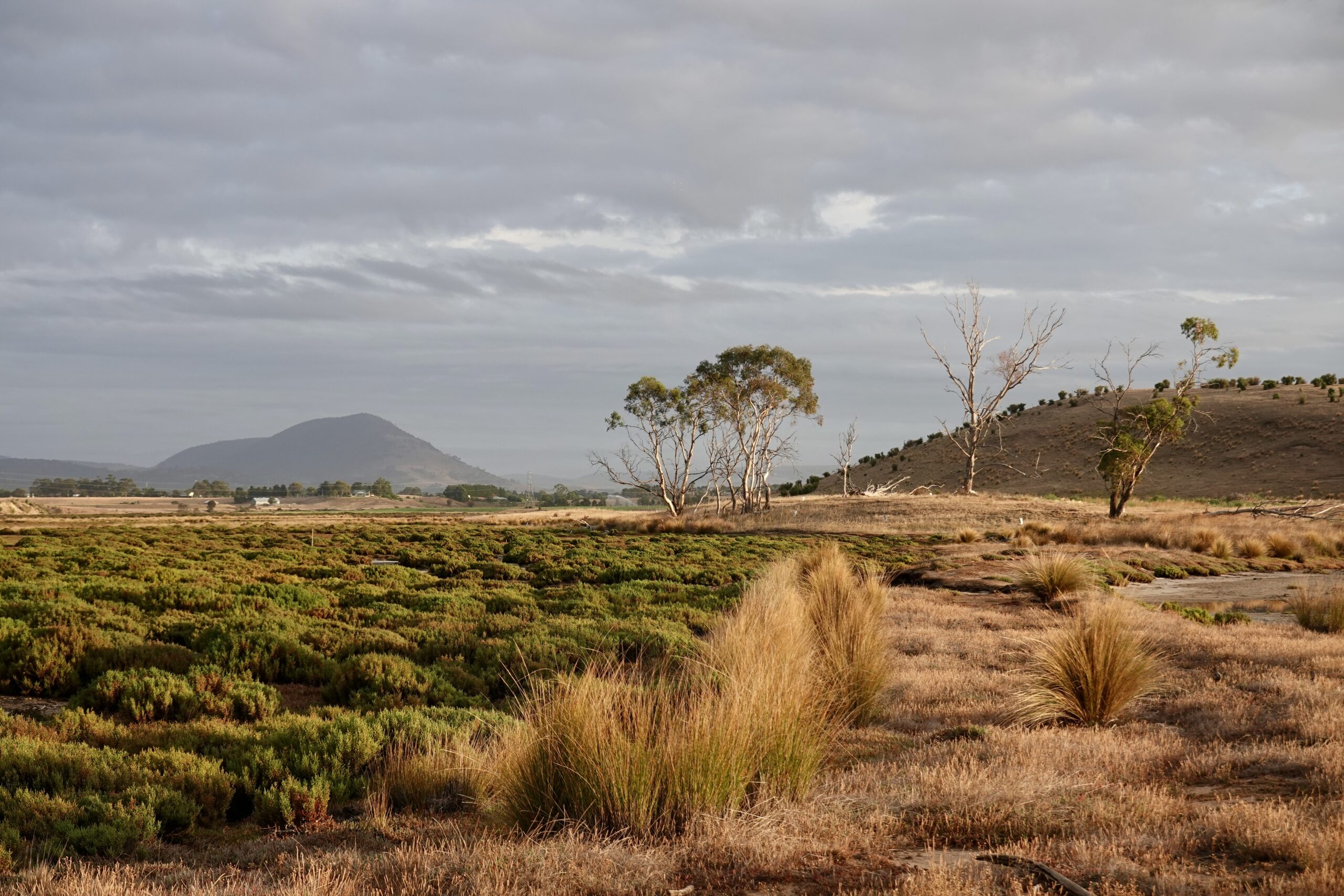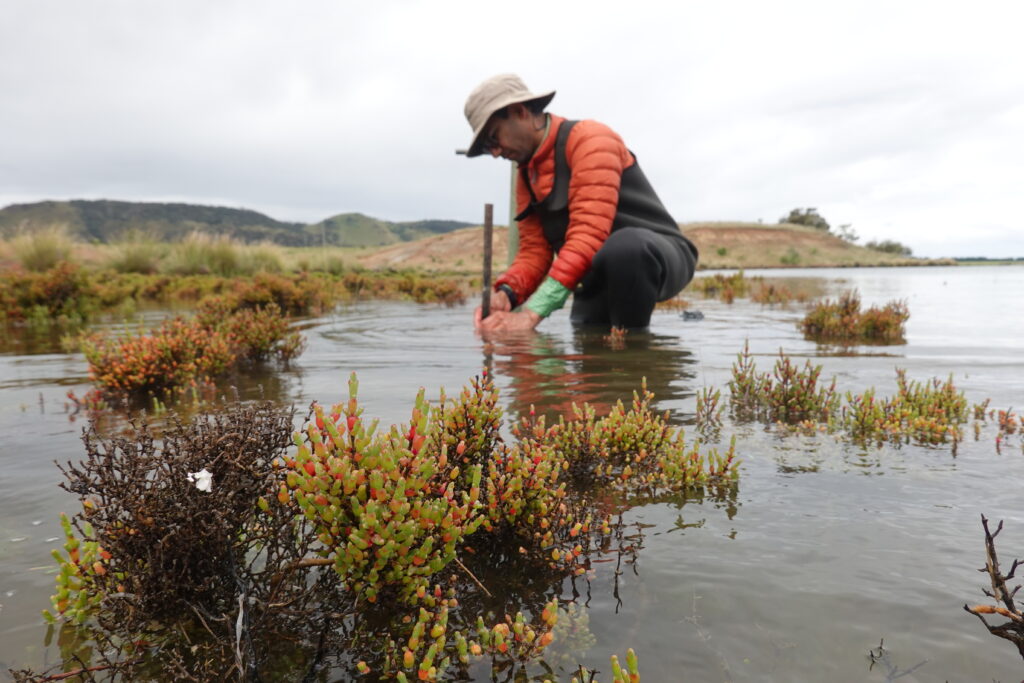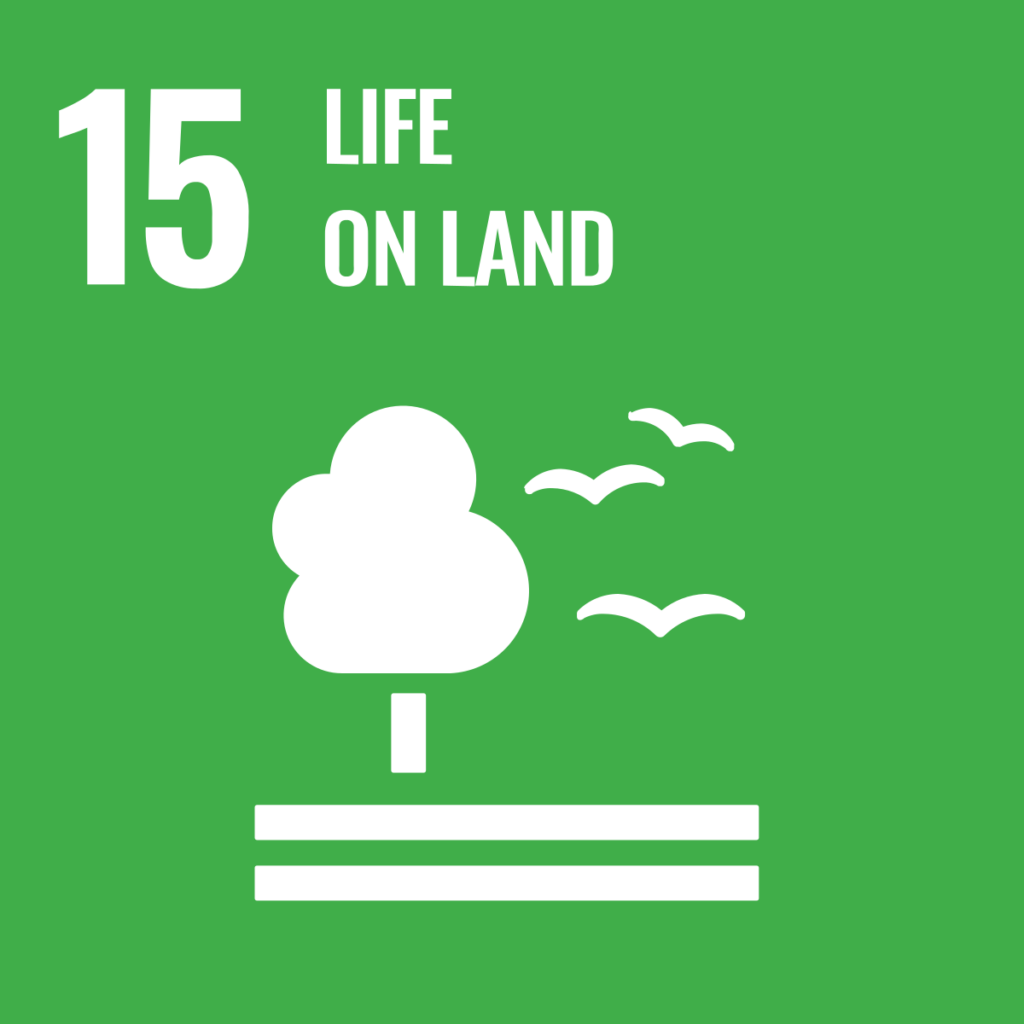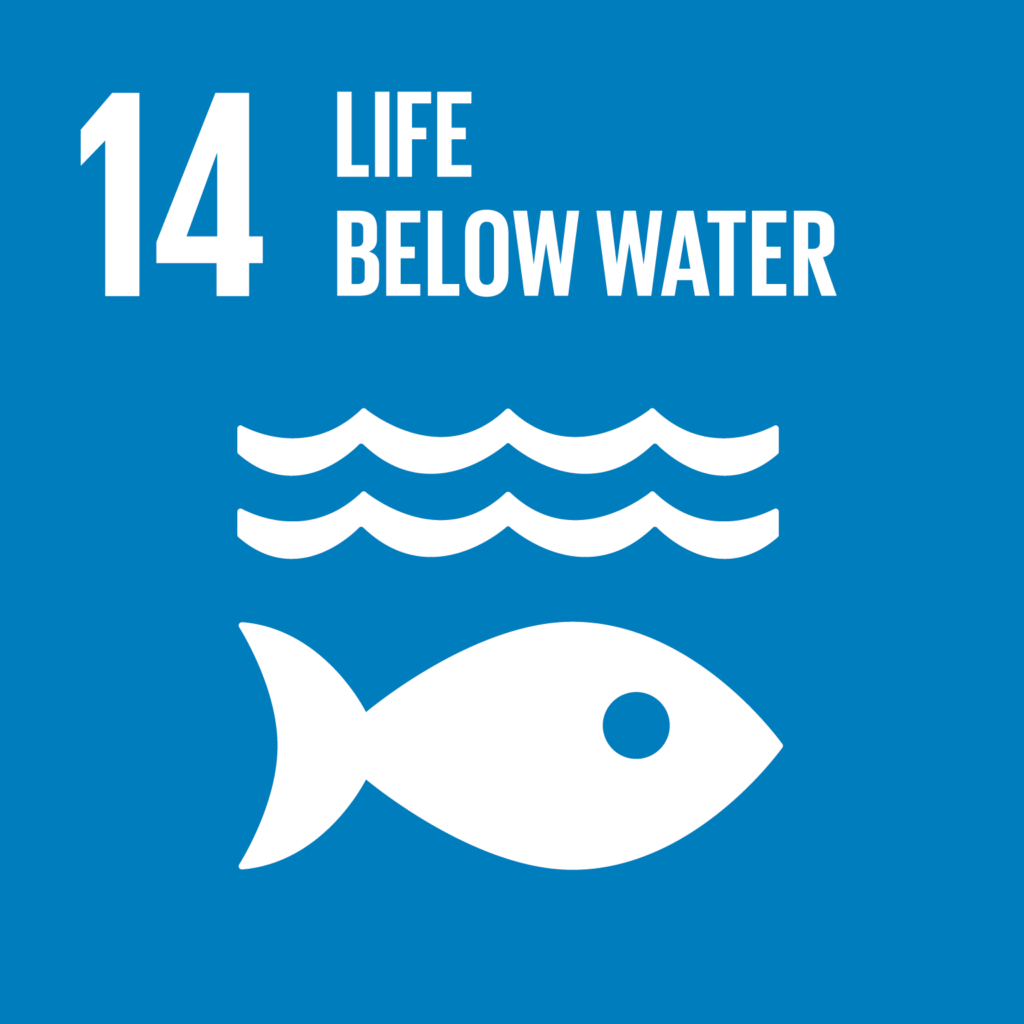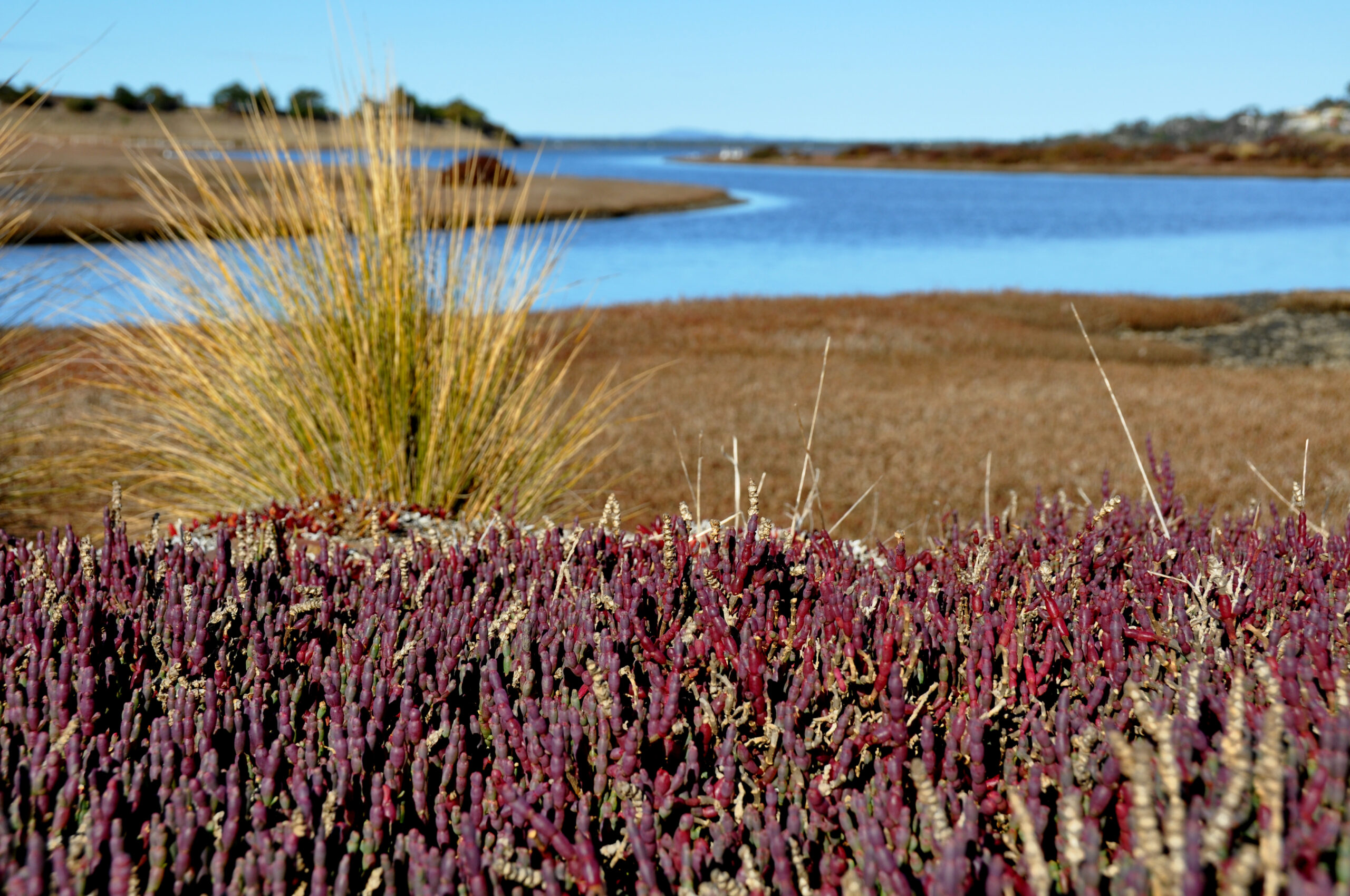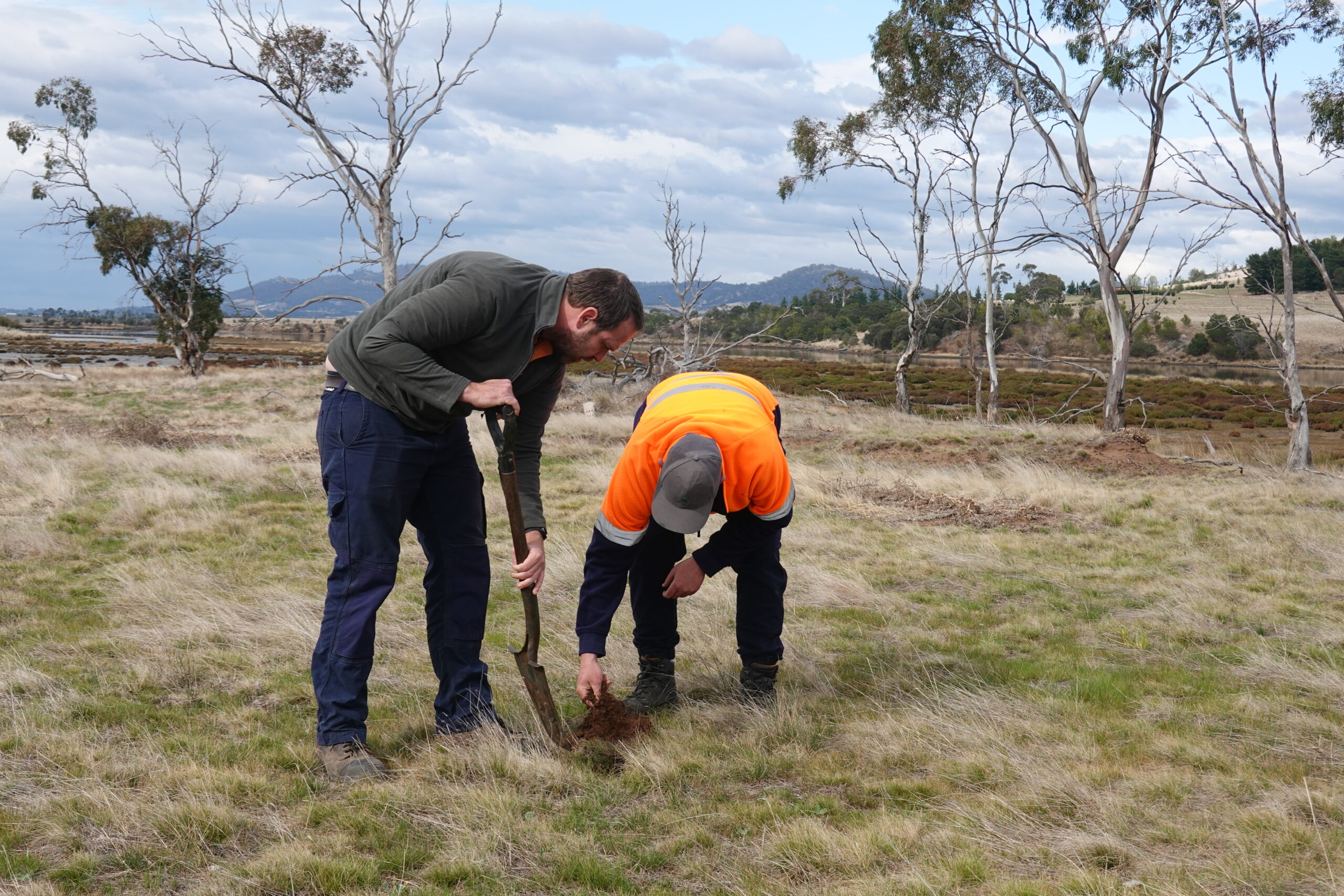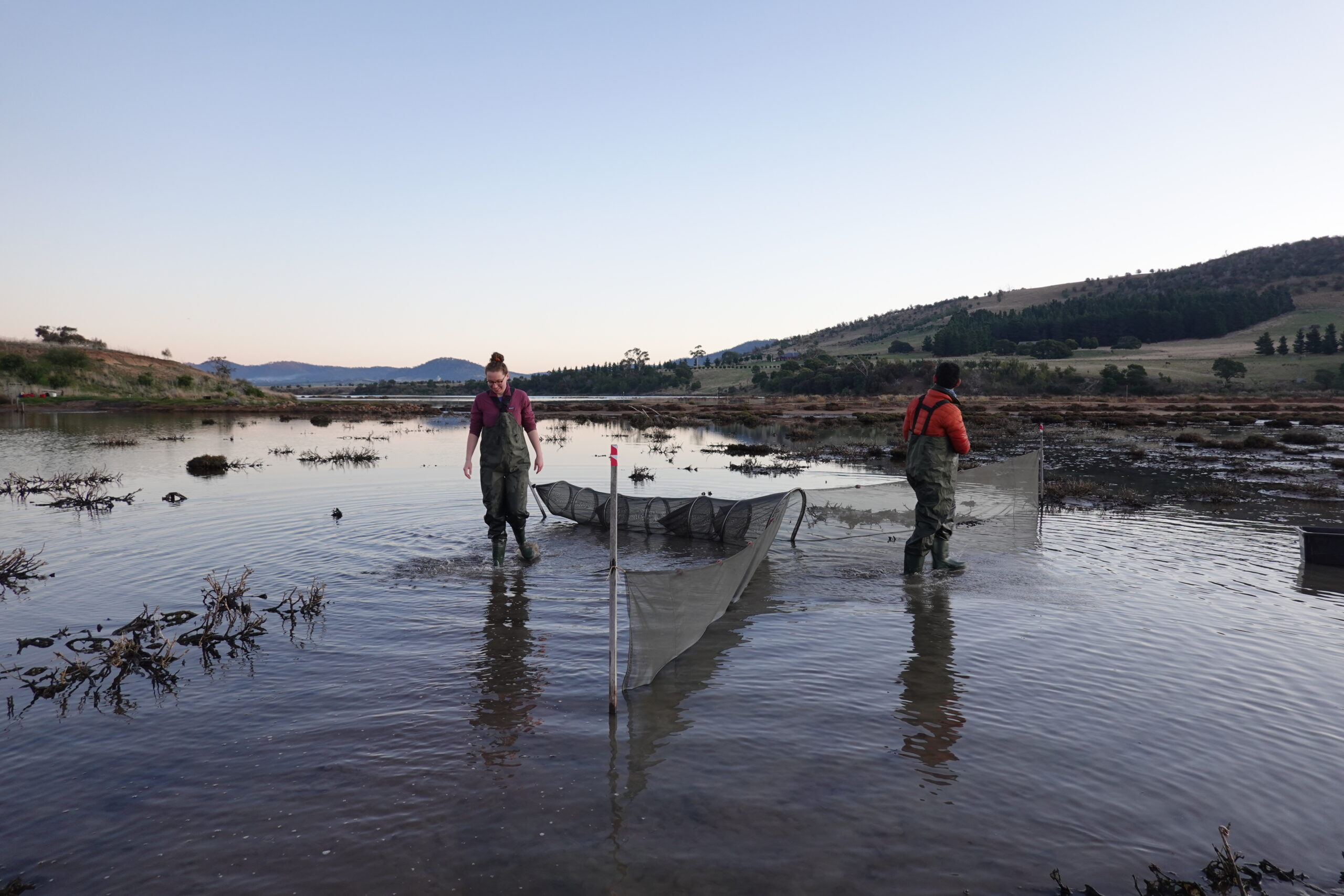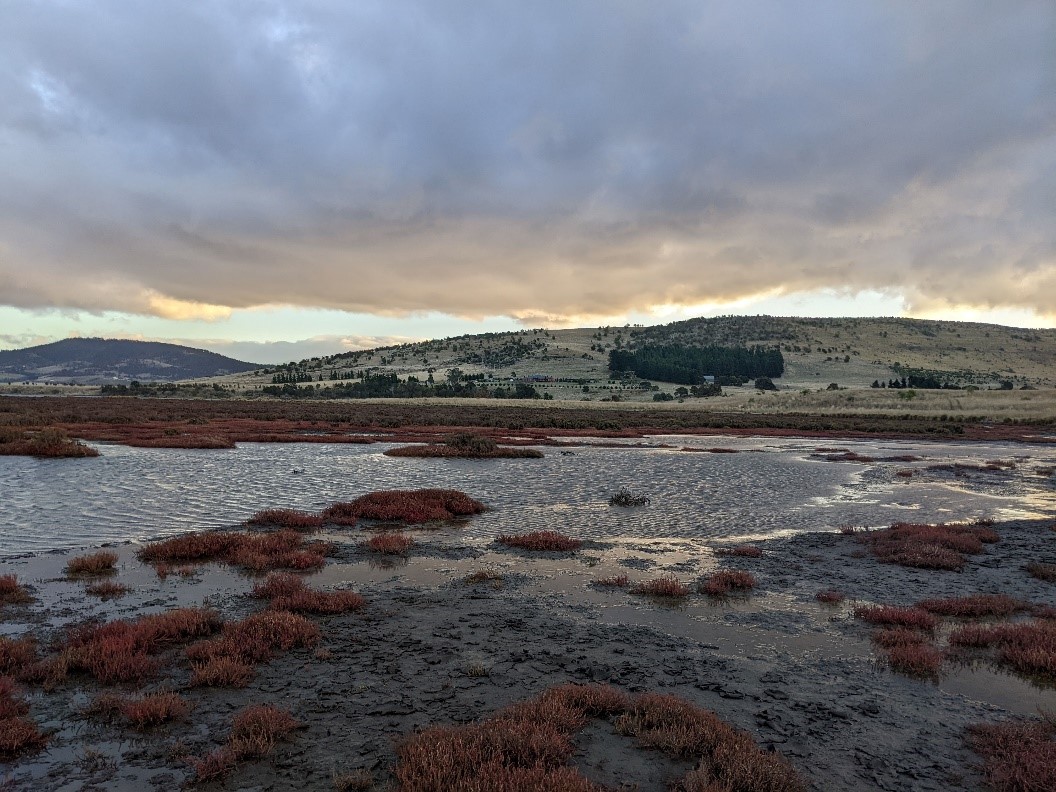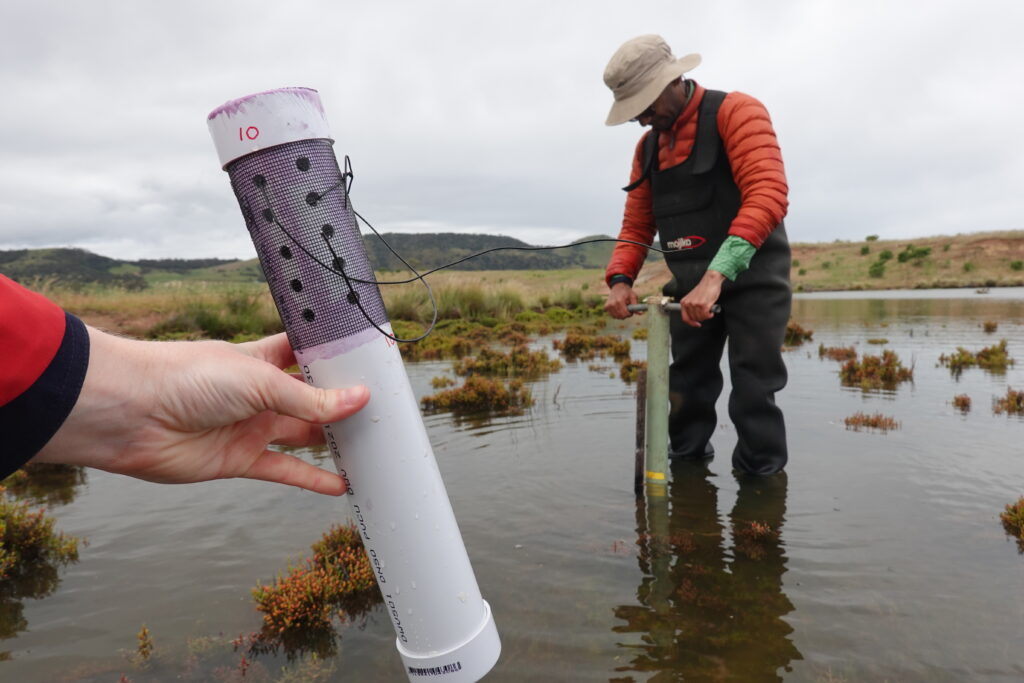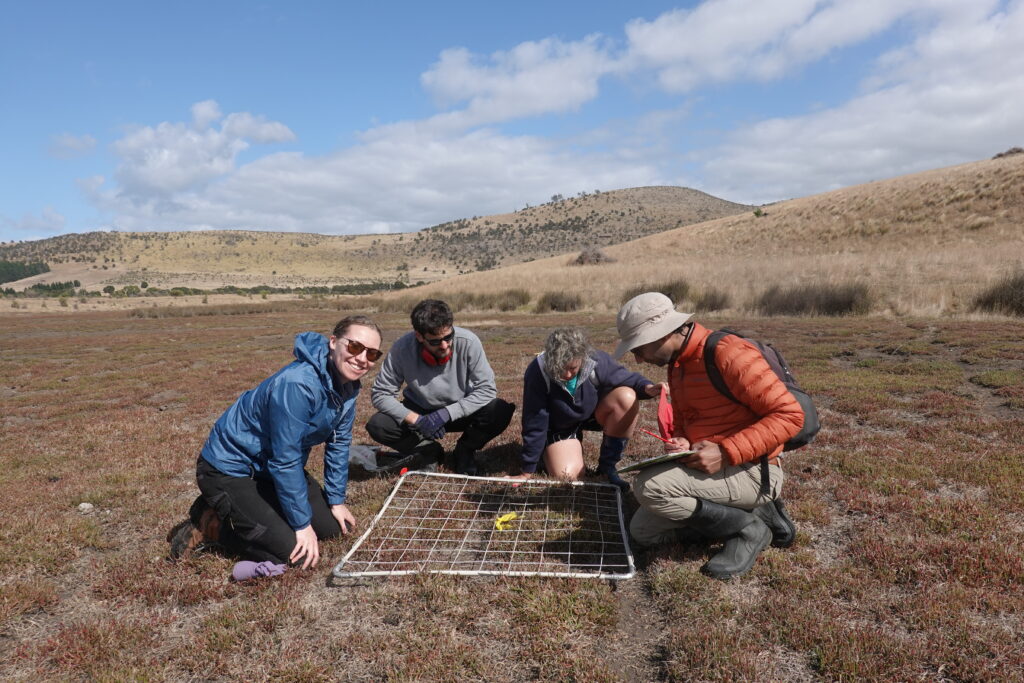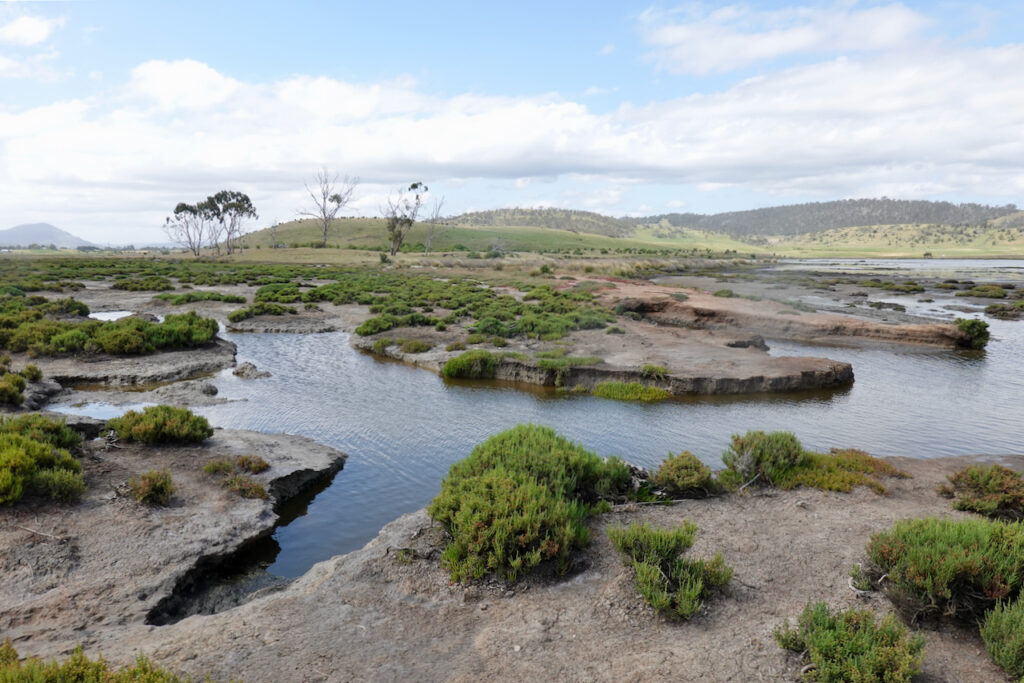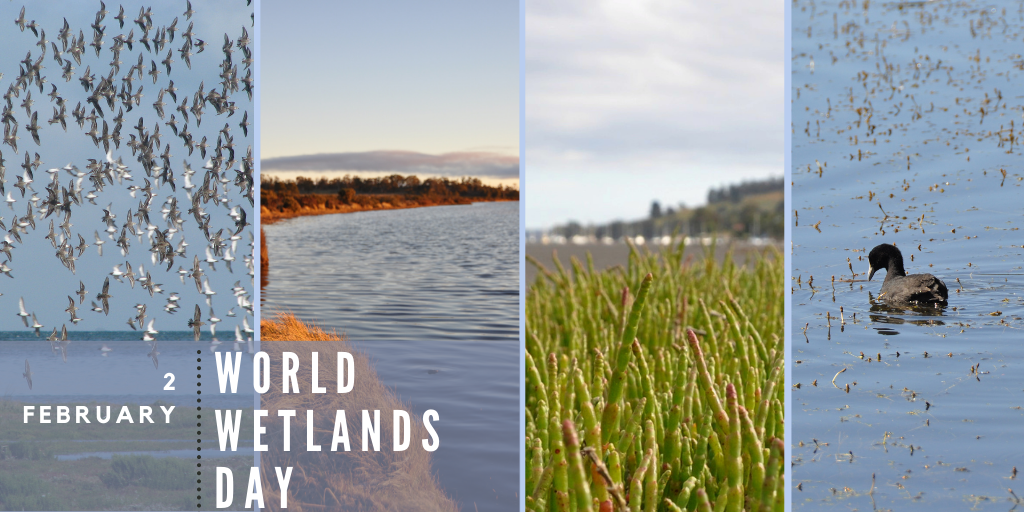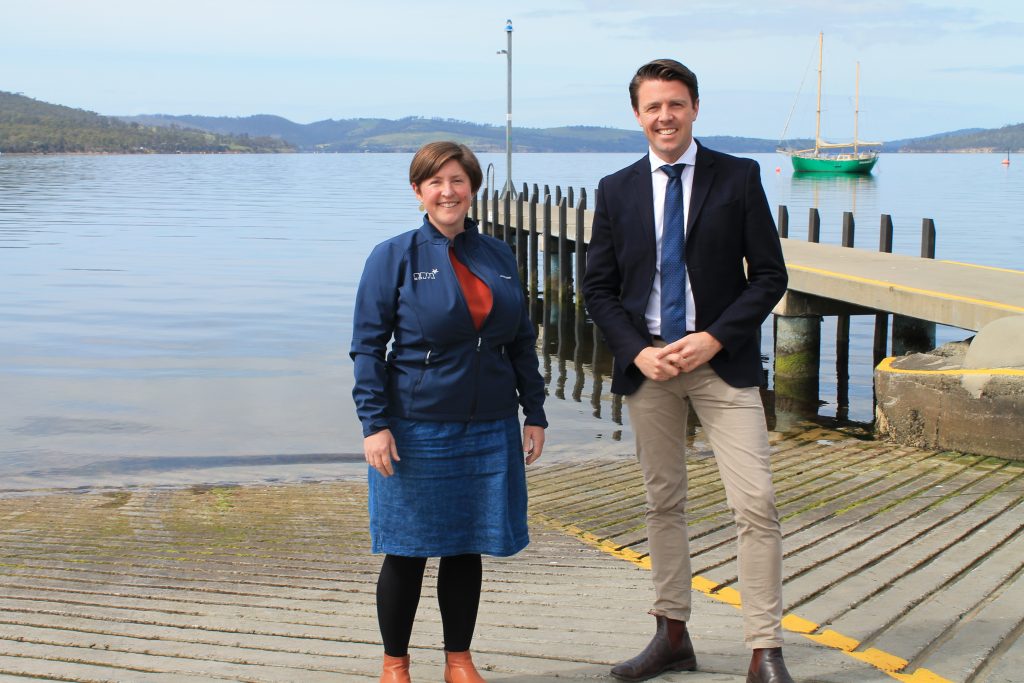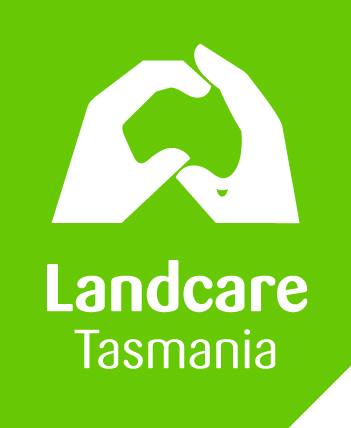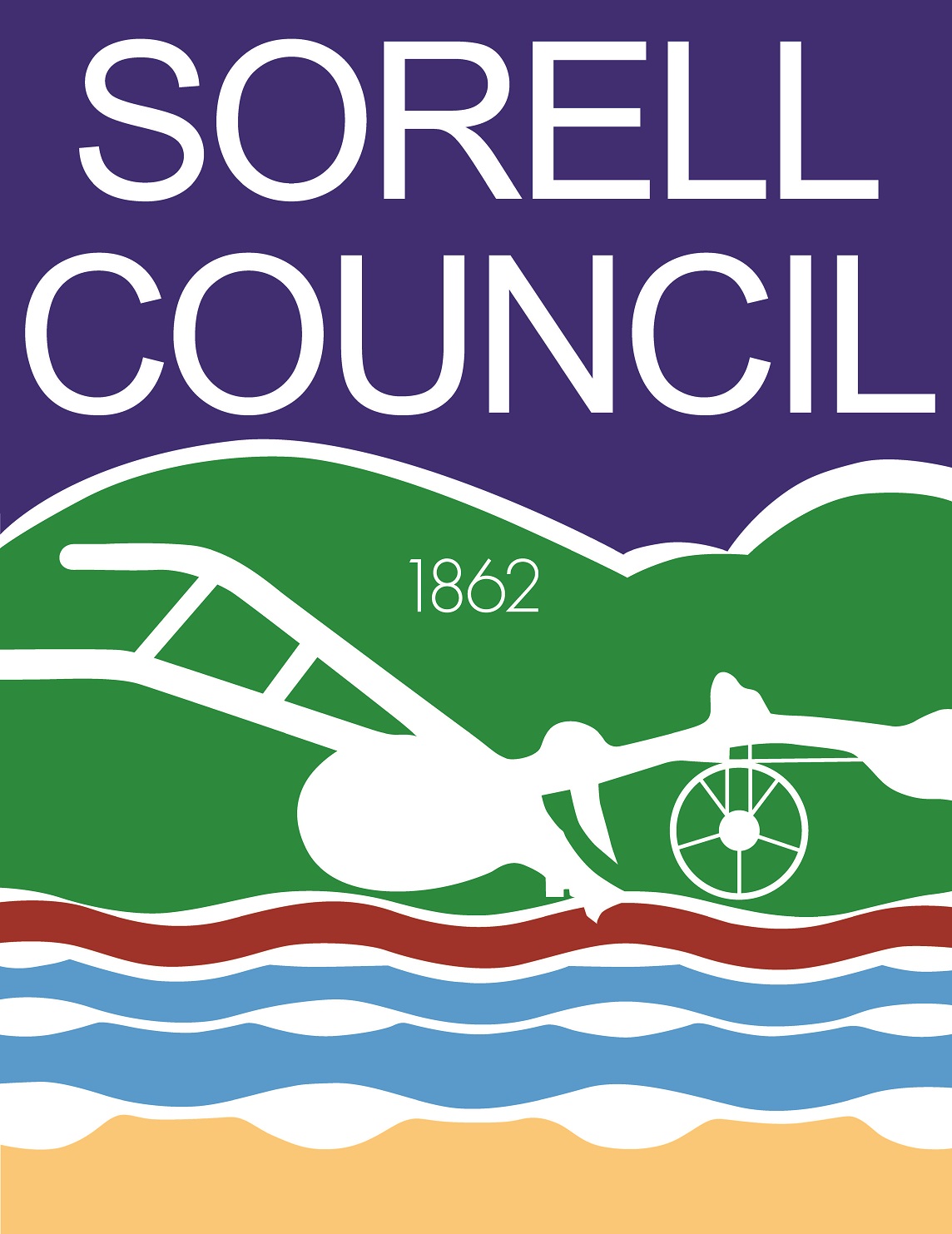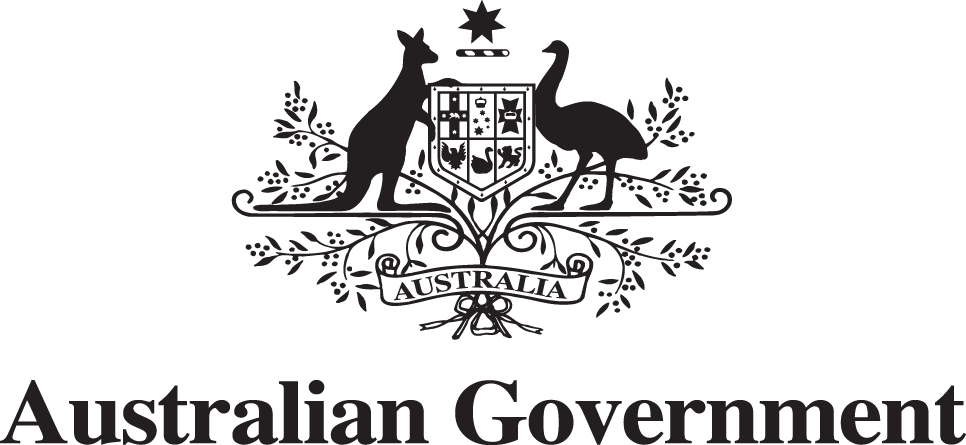Rivers to Ramsar
Improving catchment and wetland health at Pitt Water-Orielton Lagoon
Our Rivers to Ramsar project is working to restore and rehabilitate riparian zones across public and private land along three waterways feeding into Pitt Water-Orielton Lagoon, a Ramsar-listed wetland located near a rapidly growing urban centre. The project aims to enhance critical wetland habitats for threatened migratory birds, reconnect important habitat corridors, and reduce nutrient and sediment runoff.
Project actions are addressing the threats posed by weeds, altered sediment transport, agricultural activities, stormwater pollution, urban development and climate change.
The Rivers to Ramsar project builds on our legacy of action at Pitt Water-Orielton Lagoon. Our most recent project works, which began in 2019, have seen us work with private landholders to mitigate the impacts of past land management practices. Through this project, which runs until 2028, we will be continuing our efforts to restore, enhance and protect this important wetland complex and associated waterways.
This project is part of the Australian Government’s $200 million Urban Rivers and Catchments Program, which is working to restore the health of our urban waterways for native plants, animals and local communities.
STRATEGY PRIORITY ww2: pitt water – orielton lagoon
This tidal salt-water lagoon with a narrow entrance to the sea, and has input from
four rivers. Most of the wetland is fringed by saltmarsh vegetation and rocky shores, but spanned by a causeway and fringed by peri-urban and agricultural development.
What we are doing:
On-ground actions to improve the ecological condition of this site through weed control, stock exclusion, revegetation and waste removal.
Managing threats to hydrology by supporting actions to remediate hydrological flows and water quality.
STRATEGY PRIORITY BC4: subtropical and temperate saltmarsh
Subtropical and temperate saltmarsh is listed as a vulnerable ecological community (EPBC Act). Pitt Water-Orielton Lagoon contains some of southern Tasmania’s most extensive areas of saltmarsh habitat, and over half of these important ecosystems have been lost across southern Tasmania over the past two centuries.
What we are doing:
Working with partners and landholders to reduce the impacts from stock, weeds, erosion and altered hydrological regimes.
Supporting the identification of existing monitoring data and the evaluation of resource condition trends.
Our Approach
Working in partnership with Landcare Tasmania and Sorell Council, and in collaboration with the Tasmanian Parks and Wildlife Service and TasWater, we are:
- Establishing a monitoring program to track environmental, physical, and biogeochemical changes resulting from the project, alongside other co-benefits of restoration,
- Improving access and safety for fauna in the waterways and wetland by removing and disposing of waste fencing and other materials,
- Enhancing riparian habitat corridors, wetland, and saltmarsh communities through the removal of willows and other invasive weeds,
- Restoring critical native woody and grassy riparian habitats along three waterways and within the wetland complex,
- Improving natural tidal hydrology by removing infill from priority areas within the wetland complex, and;
- Restricting livestock and vehicle access to aid the recovery of revegetated riparian and fringing habitats, and reduce sediment and nutrient runoff.
PROJECT PILLARS
Background
Orielton Lagoon is part of the Ramsar-listed Pitt Water-Orielton Lagoon. This tidal salt water lagoon is Tasmania’s only urban Ramsar site, located between Sorell and Cambridge, east of Hobart. Orielton Lagoon is classified as a Nature Reserve and is managed by the Tasmanian Parks and Wildlife Service (PWS).
Pitt Water-Orielton Lagoon supports diverse marine life, attracts migratory birds, and serves a nursery for commercially important species. It also features significant saltmarsh diversity, providing critical habitats and supporting water quality. Historically, the area was the territory of the Moomairremener band of the Oyster Bay Tribe and holds significant Aboriginal cultural value. Today, it is a hub for fishing, birdwatching, and oyster farming.
The catchment feeding the lagoon, via Frogmore Creek, Orielton Rivulet, and Sorell Rivulet, is primarily used for grazing and production, extending to the foreshore. The surrounding land is in transition from production and rural residential use to urban residential and service centre use, with substantial growth expected to persist for the next two decades.
The vegetation along the riverbanks of Frogmore Creek, Orielton Rivulet, and Sorell Rivulet acts as a buffer between adjacent landscapes, the waterway and the wetland ecosystem. However, these riparian areas have been significantly impacted by land clearing, livestock grazing, trampling, and the spread of invasive species such as willows. Increasing urbanisation is also expected to further exacerbate these impacts.
Through this project we are working with Landcare Tasmania, Sorell Council, private landholders and PWS to restore and remediate these riparian zones via a range of targeted actions including weed control, debris removal, revegetation, fencing and eco-hydrological restoration.
Weed control
We are working with Landcare Tasmania to oversee a targeted willow removal program along both stream banks of a 1 km section of the Sorell Rivulet. These efforts include the development of a willow removal plan, which will include input from a fluvial geomorphologist to assess erosion risks and recommend control measures. Willows are an invasive species that have colonised numerous riverbanks across Tasmania. They crowd out native species, decrease biodiversity in river systems and overall river health, and in the long term can contribute to the erosion of riverbanks and contribute to localised flooding.
Landcare Tasmania will engage qualified contractors to carry out removal using cut and paste and drill and fill methods, leaving willow stumps in place to stabilize riverbanks while native vegetation establishes. This is being followed up by revegetation to maintain stream bank integrity following willow removal.
With support from Sorell Council and the Tasmanian Parks and Wildlife Service, we are also carrying out riparian revegetation works around Frogmore Creek, Orielton Rivulet and Orielton Lagoon. To support the success of revegetation efforts, other weeds will be managed as part of site preparation.
Removing debris
We are working with key partners to remove debris, including waste fencing and other litter, from 5.5 ha of riparian zones feeding into Pitt Water-Orielton Lagoon. The debris that has accumulated along these waterways all contribute to pollution entering the wetland, and impact on habitat quality and wildlife. We are working with Sorell Council to remove debris along Frogmore Creek, Orielton Rivulet and Orielton Lagoon, while project partner Landcare Tasmania will support Sorell Landcare volunteers to remove debris from a 1 km stretch of the Sorell Rivulet.
Revegetation and fencing
Working with project partners Landcare Tasmania and the Sorell Council, we are revegetating up to 11 ha of riparian habitat along Frogmore Creek, Orielton Rivulet, and Sorell Rivulet. This will help reduce sedimentation, create a buffer against erosion and nutrient runoff, and enhance the wetland’s microclimate.
As part of these efforts, Landcare Tasmania is supporting Sorell Landcare volunteers to collect seeds from local ecological communities to propagate up to 8,000 plants for revegetation efforts, which will focus on maximizing buffer width and planting a diverse mix of native species to establish dense, structurally complex vegetation. This will include an overstorey, midstorey, understorey, and groundcover to support key species. By connecting riparian buffers to well-vegetated waterways and remnant bushland, the project will enhance habitat quality and biodiversity.
Along Sorell Rivulet, Sorell Landcare volunteers are working to reconnect threatened vegetation communities, including Eucalyptus globulus dry forest and Eucalyptus tenuiramis forest, supporting the flyways of the endangered Swift Parrot.
To safeguard these restoration areas and ensure the success of our revegetation efforts, we are also working with private landholders and contractors to install up to 5.5 km of fencing to keep out livestock and vehicles.
Eco-hydrological restoration
With the support of local landholders and Sorell Council we are engaging contractors to remove infill from selected areas of private land adjacent to Orielton Lagoon. This will restore natural tidal flows across 21 ha of wetland, improving connectivity and allowing the threatened temperate saltmarsh to gradually adapt to sea level rise. In addition to the works completed as part of our Blue Carbon project at Pitt Water-Orielton Lagoon, which saw the restoration of tidal flows across 65 ha of stranded saltmarsh habitat, these efforts are contributing to the broader health of this 3,334 ha wetland system.
Project Goals
Reinstating natural hydrology
Revegetation across 11 ha
Weed control across 2 ha and 1 km willow removal
5.5km debris removal
5.5 km fencing
Past and Current Projects
Blue Carbon
Our Blue Carbon Ecosystem Restoration project is improving understanding of the diverse benefits of restoring a large area of stranded temperate saltmarsh community, including what happens to adjacent areas of habitat such as seagrass, or surrounding land-based vegetation and ecological communities. This project runs until May 2025.
Read more here.
Saltmarsh Restoration in Pitt Water-Orielton Lagoon
From 2019-2023, we worked with project partners and landholders to restore saltmarsh habitat in Pitt Water-Orielton Lagoon. Works were designed to prepare for a planned restoration of natural flows and provide protection to modified saltmarsh habitat. At Pitt Water-Orielton Lagoon, historically significant saltmarsh has become degraded over the decades. This saltmarsh habitat is important for recreationally valuable fish species and our saltmarsh restoration project worked to bring benefits to fish productivity by improving fish nursery habitat.
Read more here.
